Simeiz
Simeiz is a small urban-type settlement located twenty kilometers away from Yalta. In the best years of the 70s, only 5,500 people lived in Simeiz, and now only half of the population remains. A sharp decline occurred in 2014, immediately after Russia annexed Crimea. In just one year, the population decreased by a third, and the settlement became significantly depopulated.
The settlement in the place of Simeiz existed before our era: an ancient burial ground of the Tauri was found here. There are records about this city from both the medieval times and the Ottoman Empire period.
In the Russian Empire, Simeiz was a prestigious bourgeois resort. In the early 20th century, expensive villas were built here, and well-maintained parks were laid out. Then came the times of the Soviet Union. Expensive villas and summer cottages were nationalized and converted into boarding houses and holiday homes. Simeiz became one of Crimea’s sanatoriums, and local health resorts mainly treated tuberculosis.
The modern history of Simeiz begins in the 1950s when, for some reason, the town became popular among nudists who started to come to Simeiz from all over the Soviet Union. Of course, we now understand that not only nudists came here, but in the Soviet Union, there was a harsh punishment for homosexuality, so gay people carefully kept quiet about their orientation. However, even then, Simeiz became the gay capital of the USSR. And when in the 1990s the power of the communists ended, everything LGBTQ+ rushed to Simeiz.
It is said that at different times, all Russian celebrities rested in Simeiz: Boris Moiseev, Philipp Kirkorov... who else among our entertainers is gay? Zhirinovsky?

It is still unclear why the village appealed to gay people, but it seemed incredibly cozy to me. Hmm, why is that? Well, here’s why. It’s not like everything here reminds you of it, but there are certain places. For example, the main promenade in the city is called Apollo Avenue, a wild nudist beach is located slightly off the beaten path, and the most popular establishment in Simeiz — the “Ezhi” bar — regularly holds gay parties.
In addition to the gay scene, Simeiz is also known for a number of movies that were filmed here, either entirely or in parts. Among the most famous are “The Amphibian Man” and “The New Adventures of the Elusive Avengers”.
There was another movie that prompted the whole trip to Simeiz for the sake of scenes from it — “The Big Top Show”. The best thing filmed in modern Russia.
Big Top Show

“How did you become gay?”
“I simply thought it interested me.”
Walking around Simeiz is like stepping onto a film set. Every street, every house, every café looks like a decoration for a dozen movies, but “The Big Top Show” is especially recognizable. This movie was entirely filmed in Simeiz, and everything in the town reminds you of that.
Simeiz begins with the “Simeiz” bus station. This station often appears in the plot of the movie, but in the film, it is simply called “Bus Station”, and the prefix “Simeiz” was added later — it even has a different font.

Inside the station is a typical Stalinist interior of the era of Crimean sanatoriums. There are old luggage safes and an ugly information stand from the 90s.
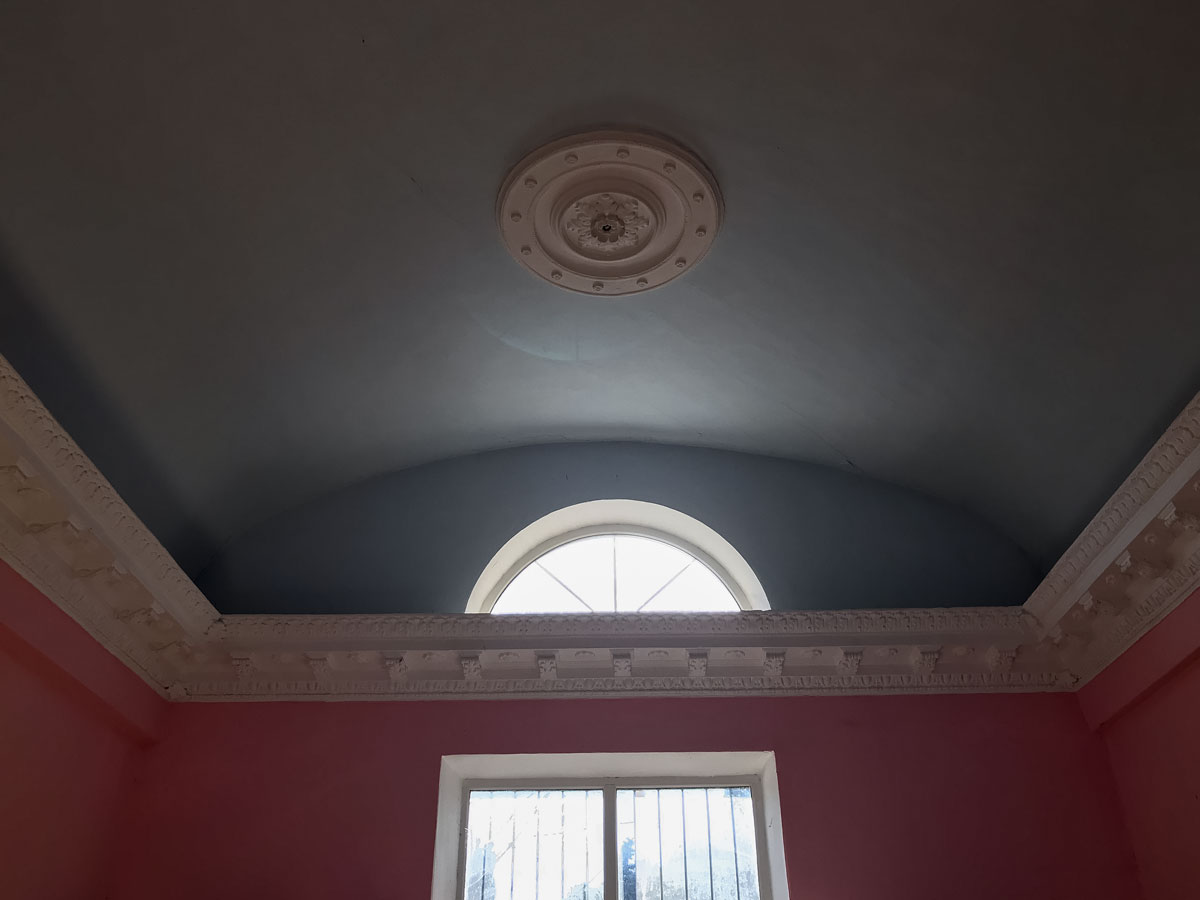
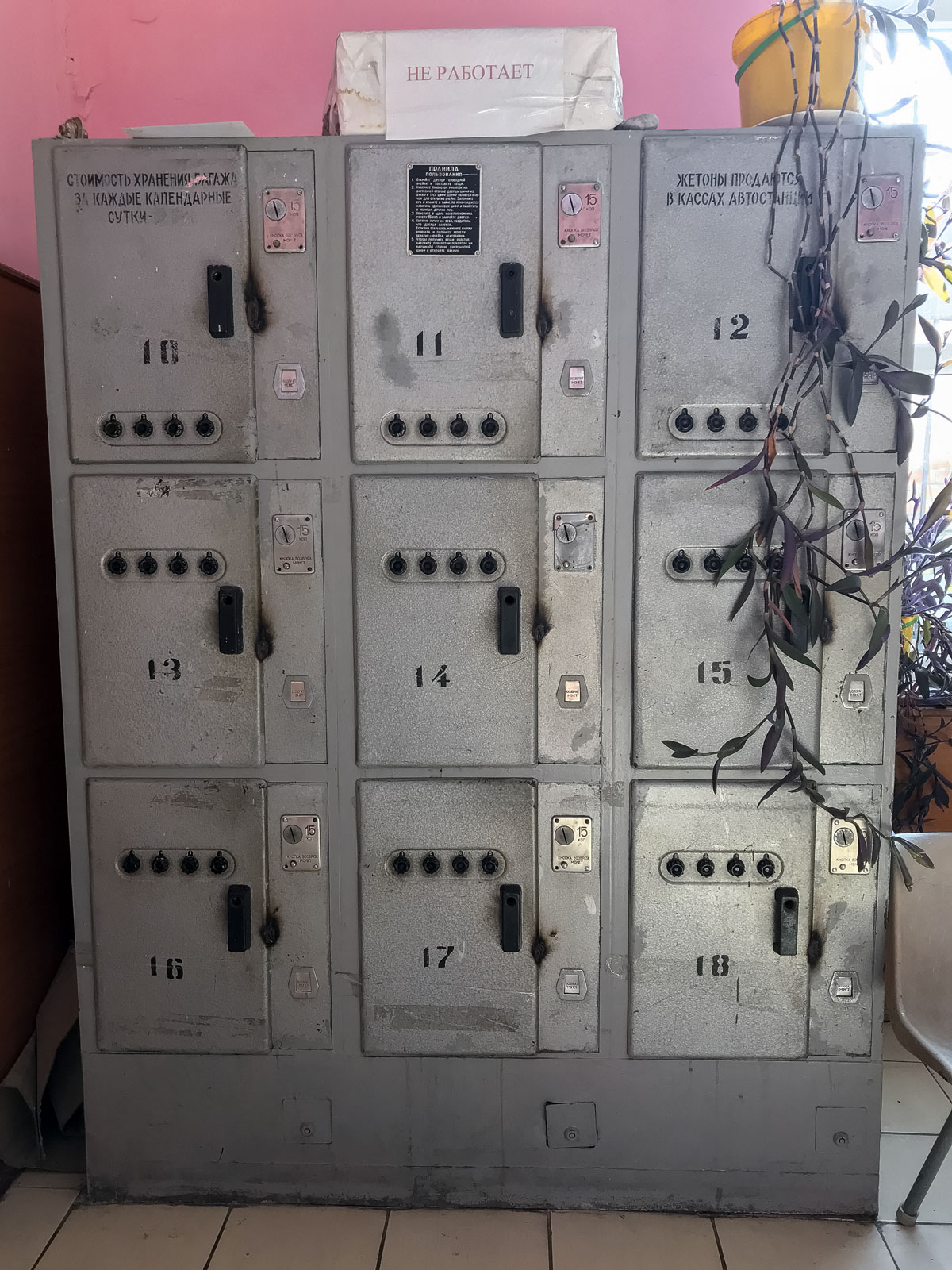
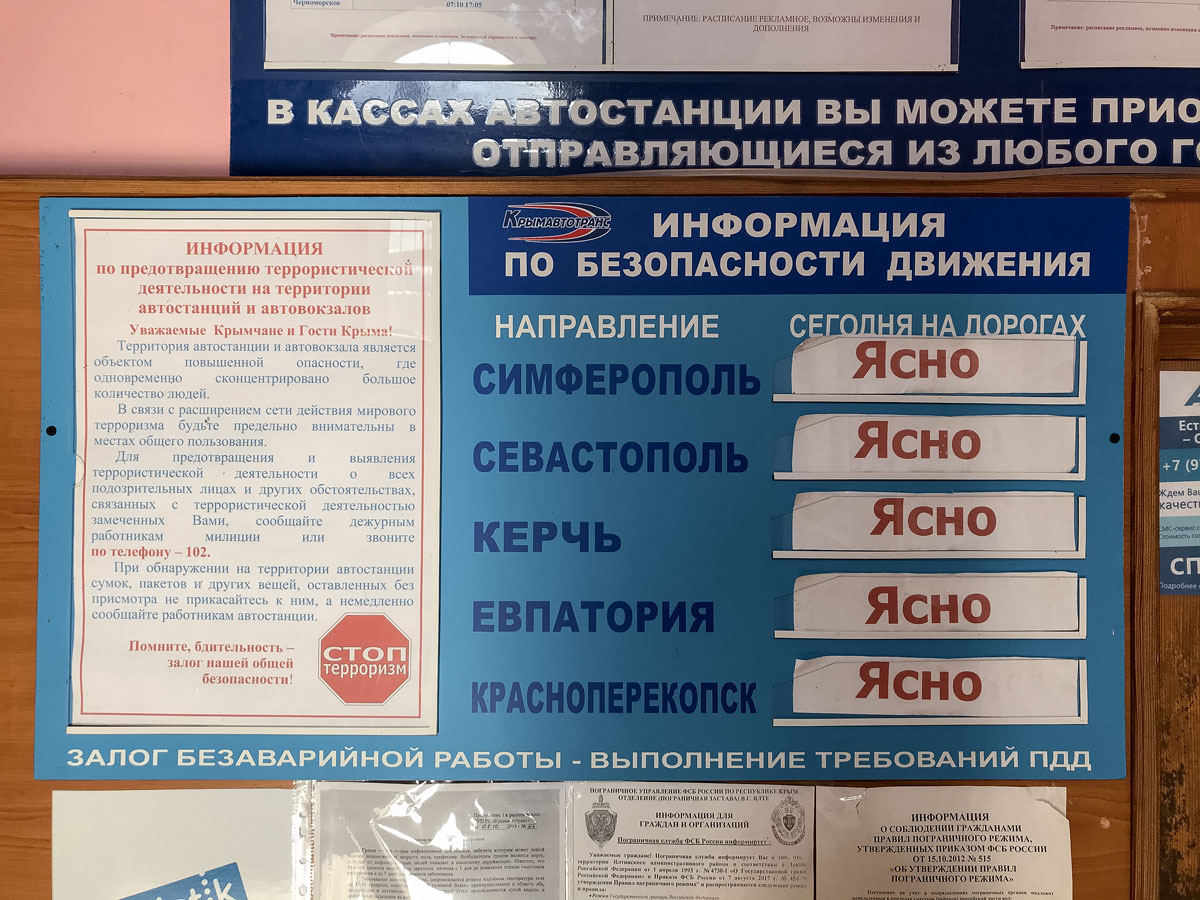
Various types of weeds grow near the station:

A cozy street leads slightly uphill:

In principle, Soviet artifacts start here. Here is an original sign from the 80s:
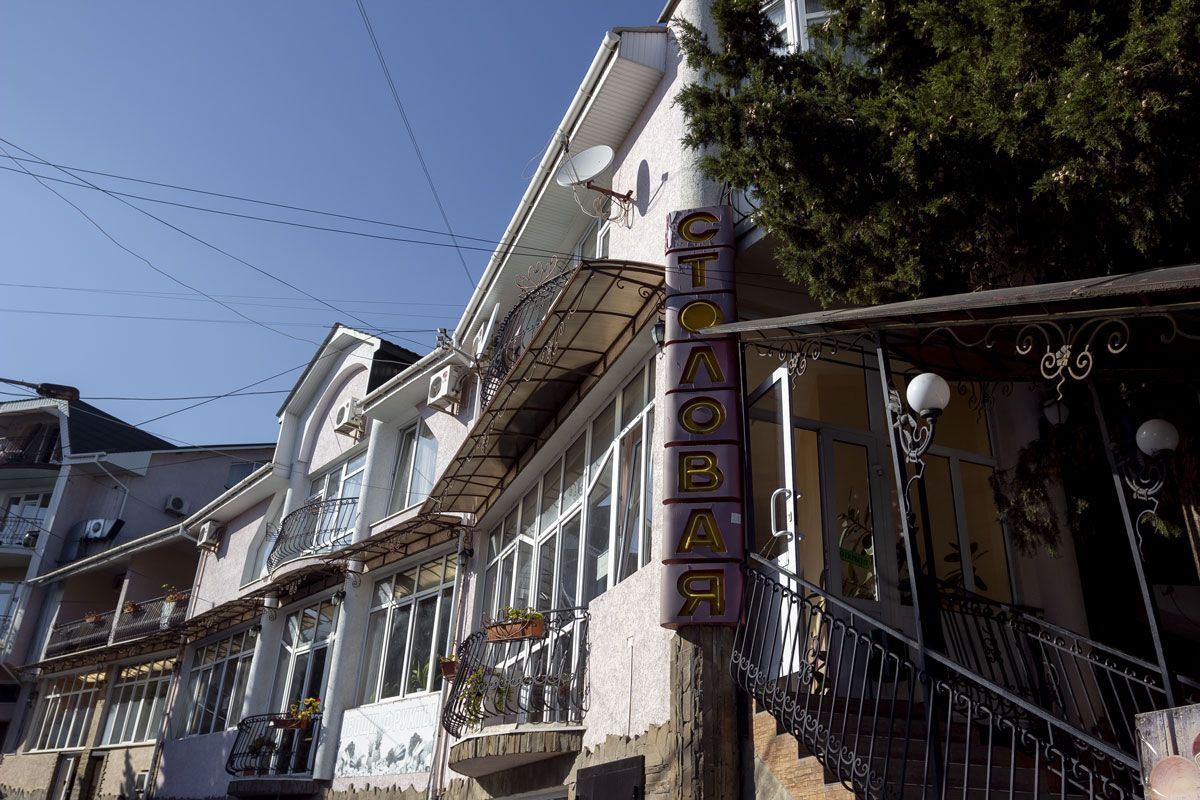
We won’t dine at the nameless diner, as there is a splendid cafe nearby called “Simeiz”!
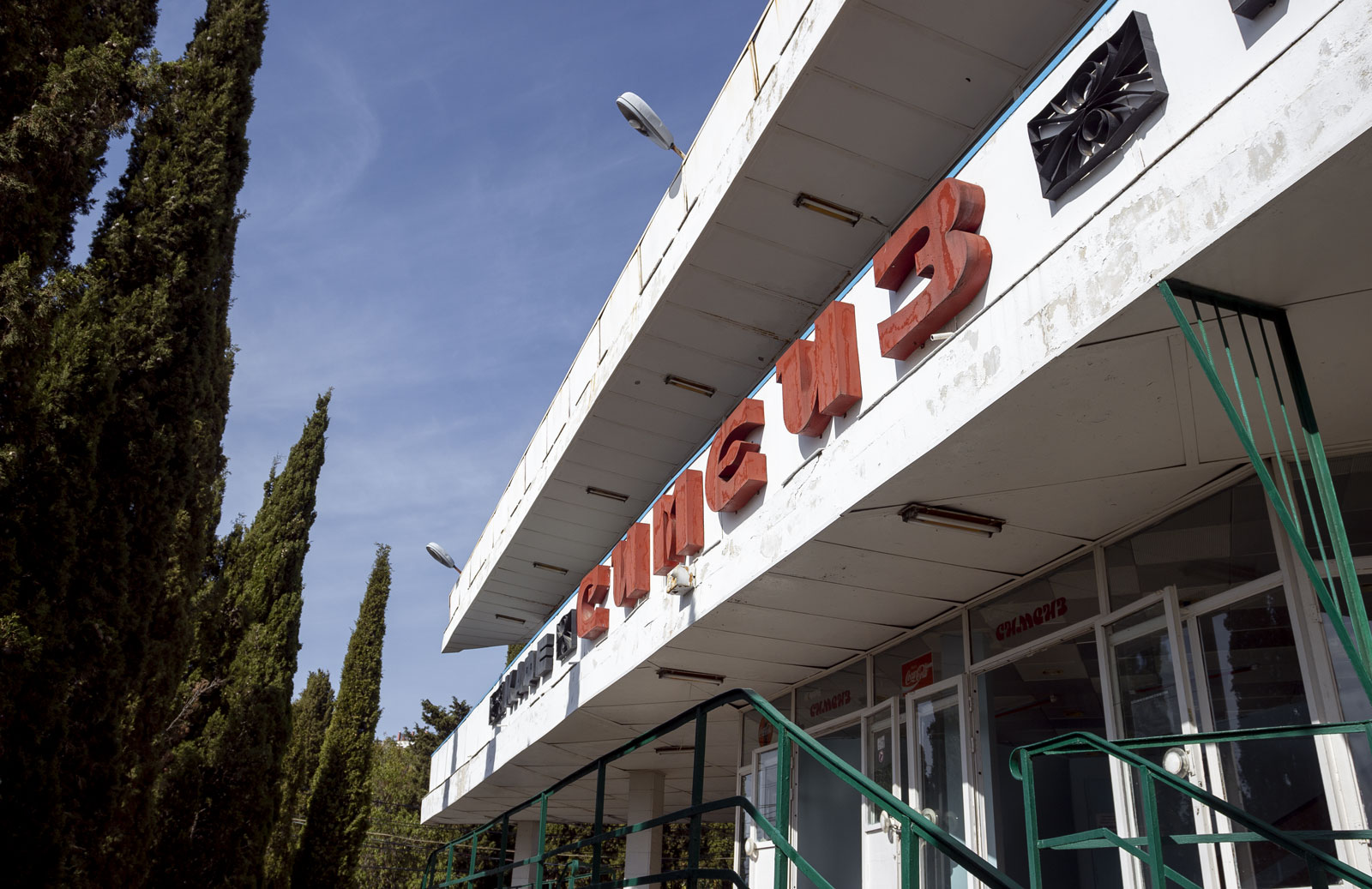
“Big Top Show” was also filmed here.

It seems that the cafe has not changed at all since Soviet times. It’s an incredible experience. A complete immersion into the USSR.
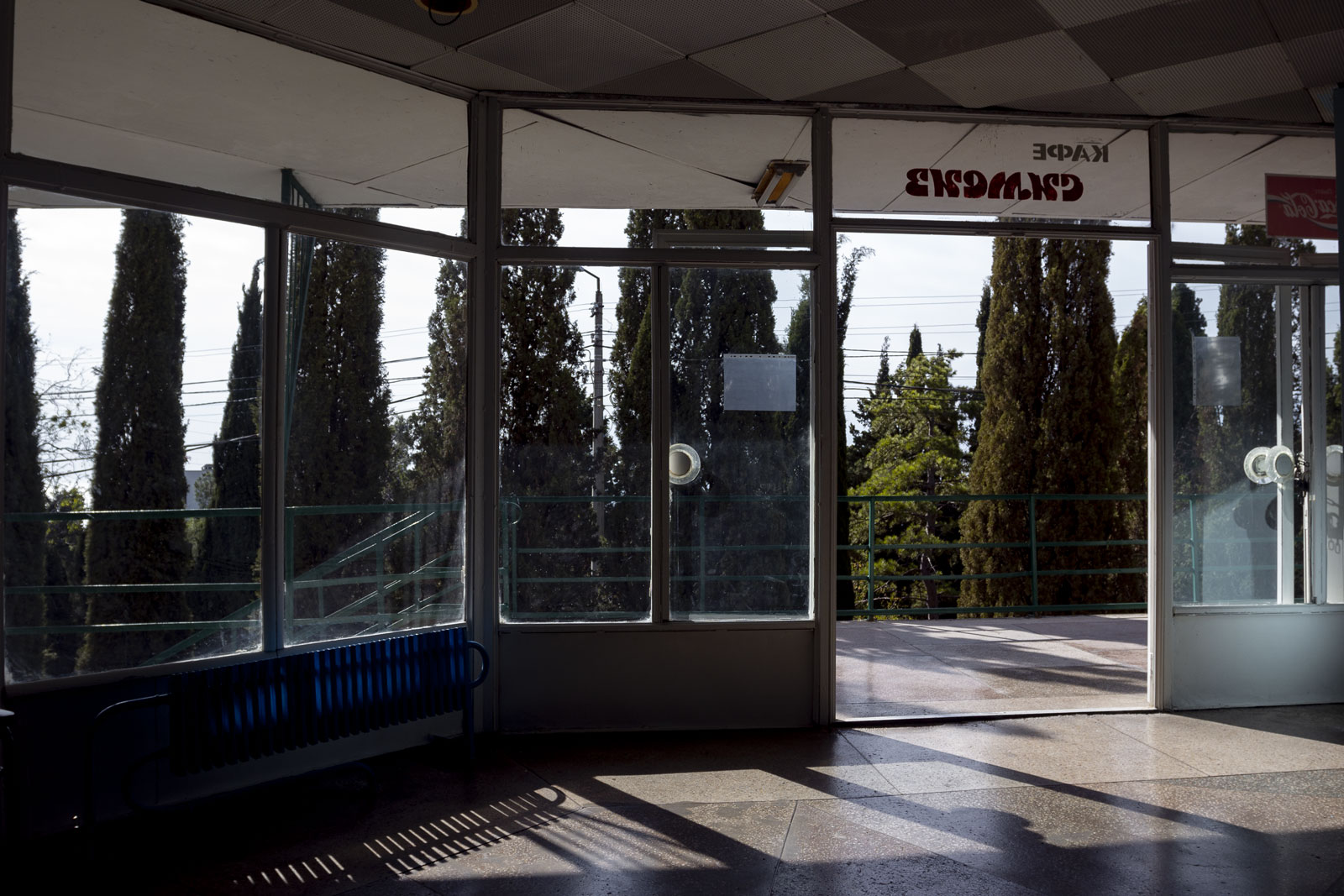
Just look at this staircase! What a shade of blue!
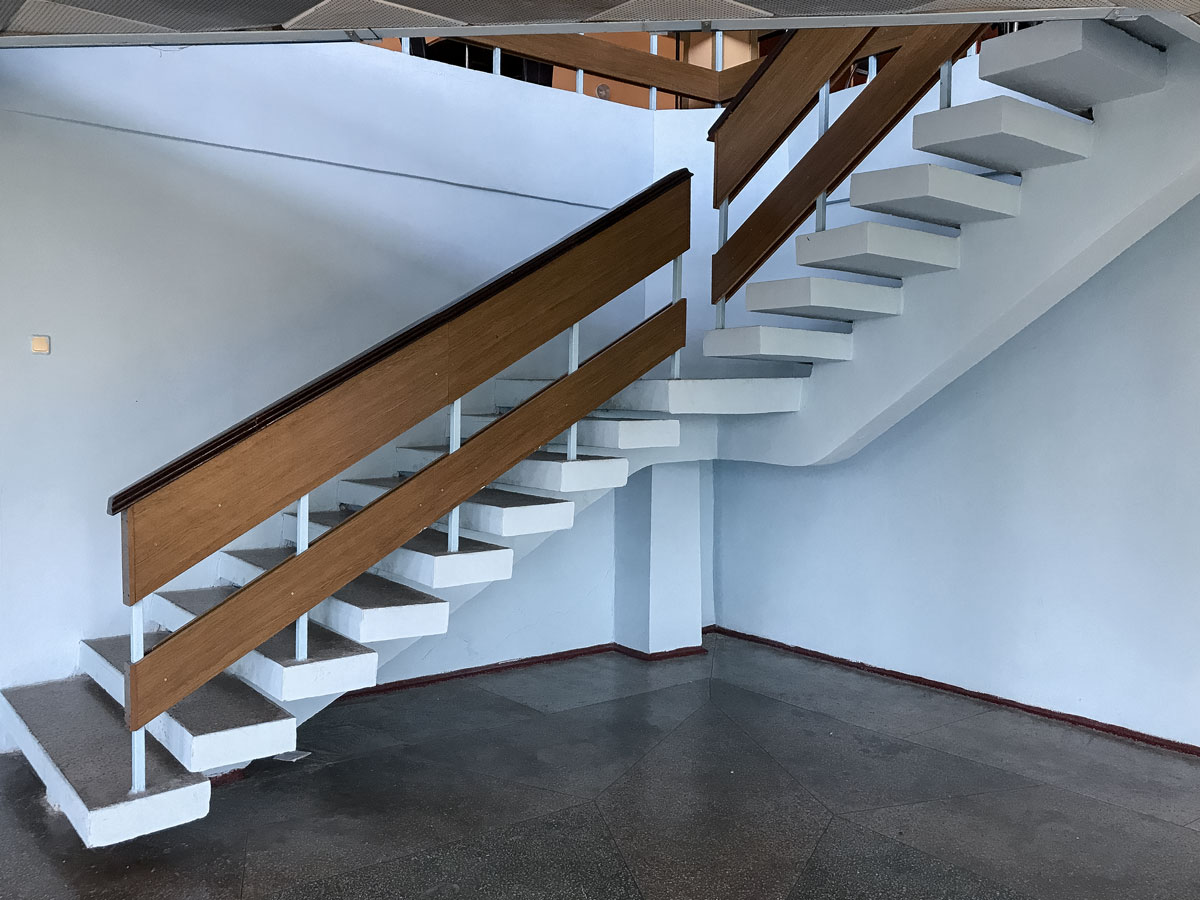
And these hand-washing sinks! An old mirror, diamond-shaped tiles, Soviet paper towels, old electrical panels — an incredible amount of household details.

This is exactly what student cafes looked like in the USSR. The last time I had lunch in places like this was when I studied at MAI and did an internship at bald VNII. It is unlikely that anything like this has been preserved in Moscow, but here in Simeiz, everything remains untouched.
Someone may consider me insane, but as a designer, I was ready to kiss every detail in this café. They serve terrible coffee, decent scrambled eggs, and cottage cheese pancakes with sour cream. Everything is just like in the Soviet Union. You can have lunch for 150 rubles. But is lunch the point? Look at these fonts!

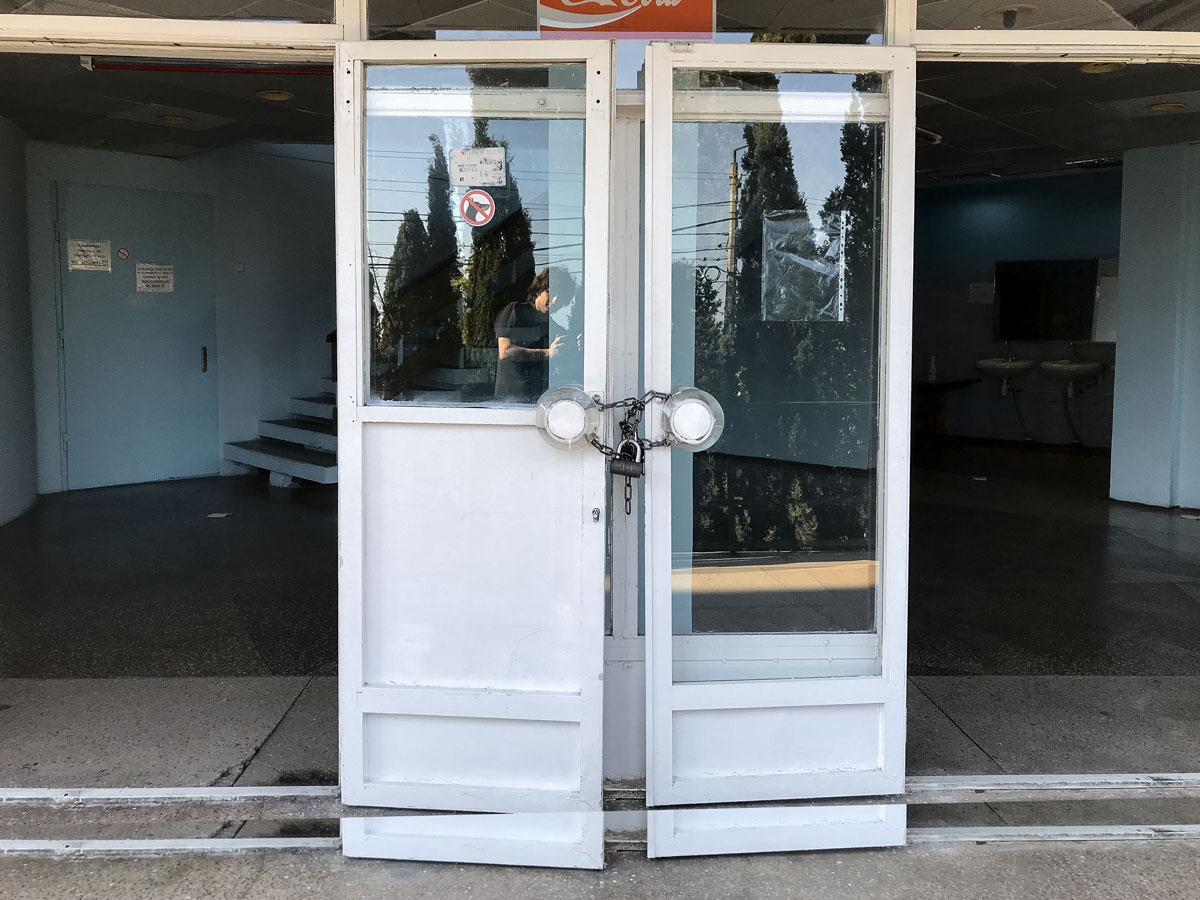
Let’s move on. Beautiful exterior of the pharmacy building. The streetlamp is a modern one, but pleasant.
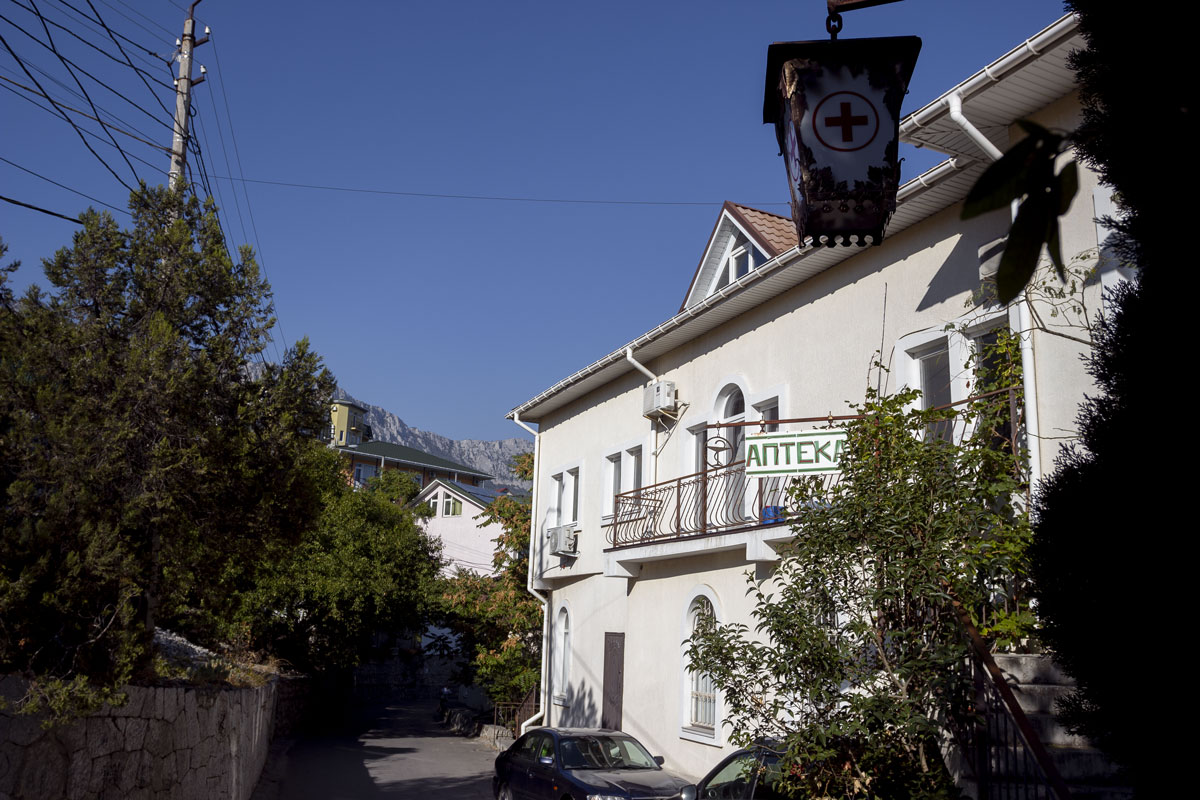
This part of the city is slightly elevated. Almost all the roofs down there are of the same shade of red. Is that even possible?
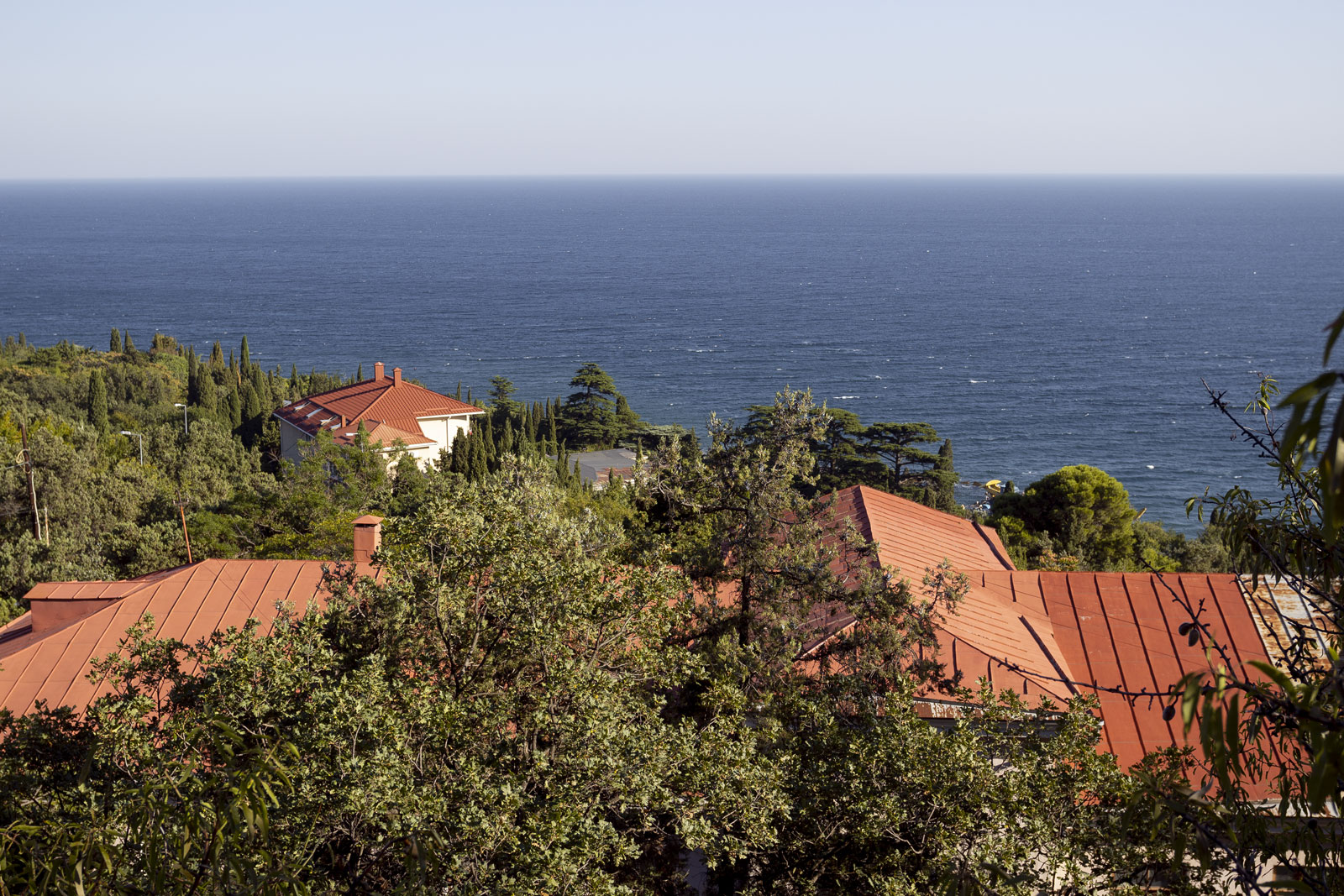
Even the signs about renting apartments are a masterpiece. Folk calligraphy for every taste.
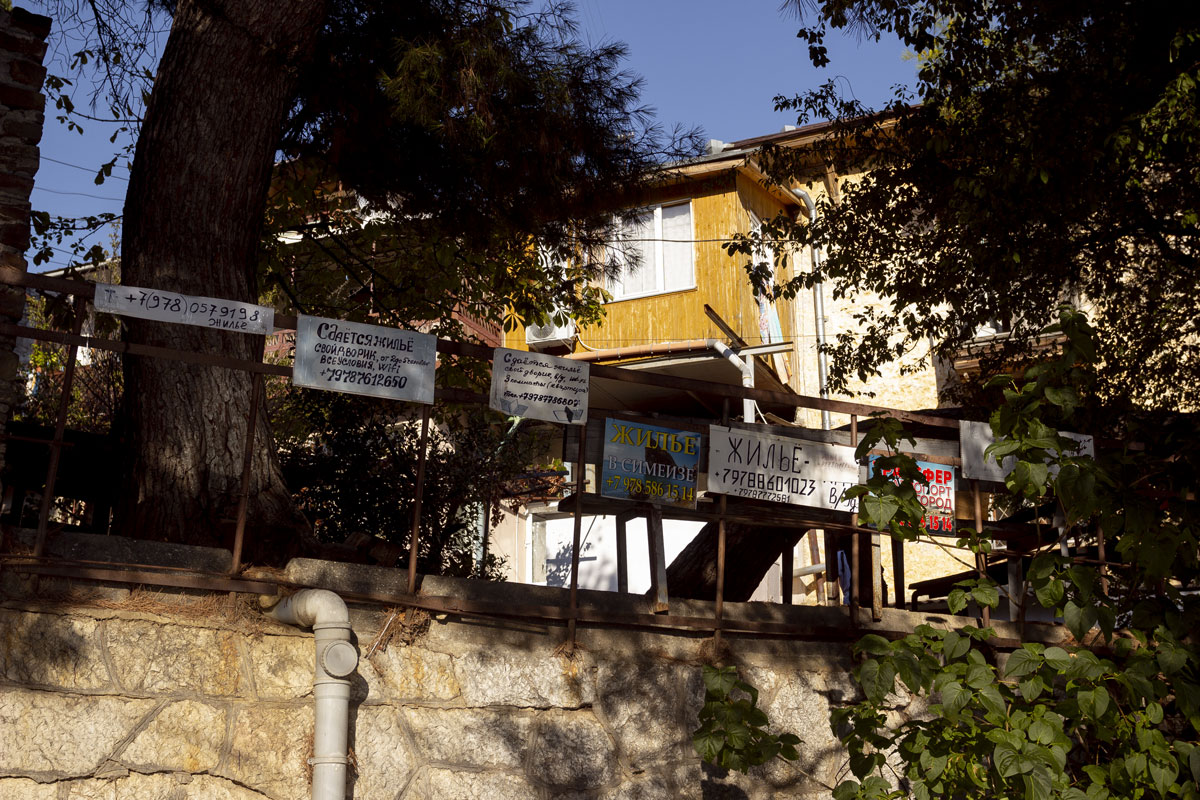
Typical streets in Simeiz. Everything is cluttered with cars and planted with cypresses. I would gladly blow up the cars.
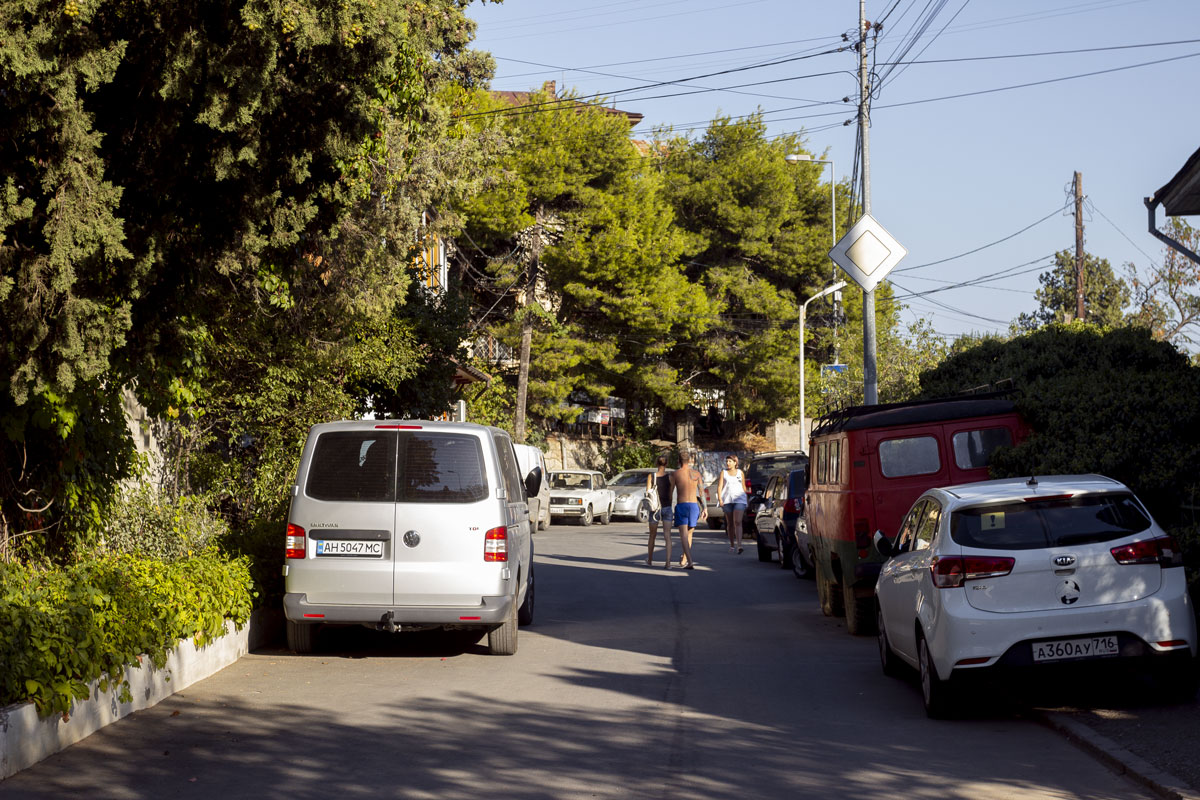

The cypresses grow in such a dense forest that you can’t see the houses behind them, and by the way, many of the dachas here are two-story and quite steep.


Many dachas in Simeiz have names. The thing is that various officials and aristocrats from the Russian Empire settled here, and they built wealthy villas. This house is called “Subbotina’s Dacha,” in honor of the wife of the wealthy engineer Subbotin. The Bolsheviks seized the dacha and opened the “Red Beacon” sanatorium there.
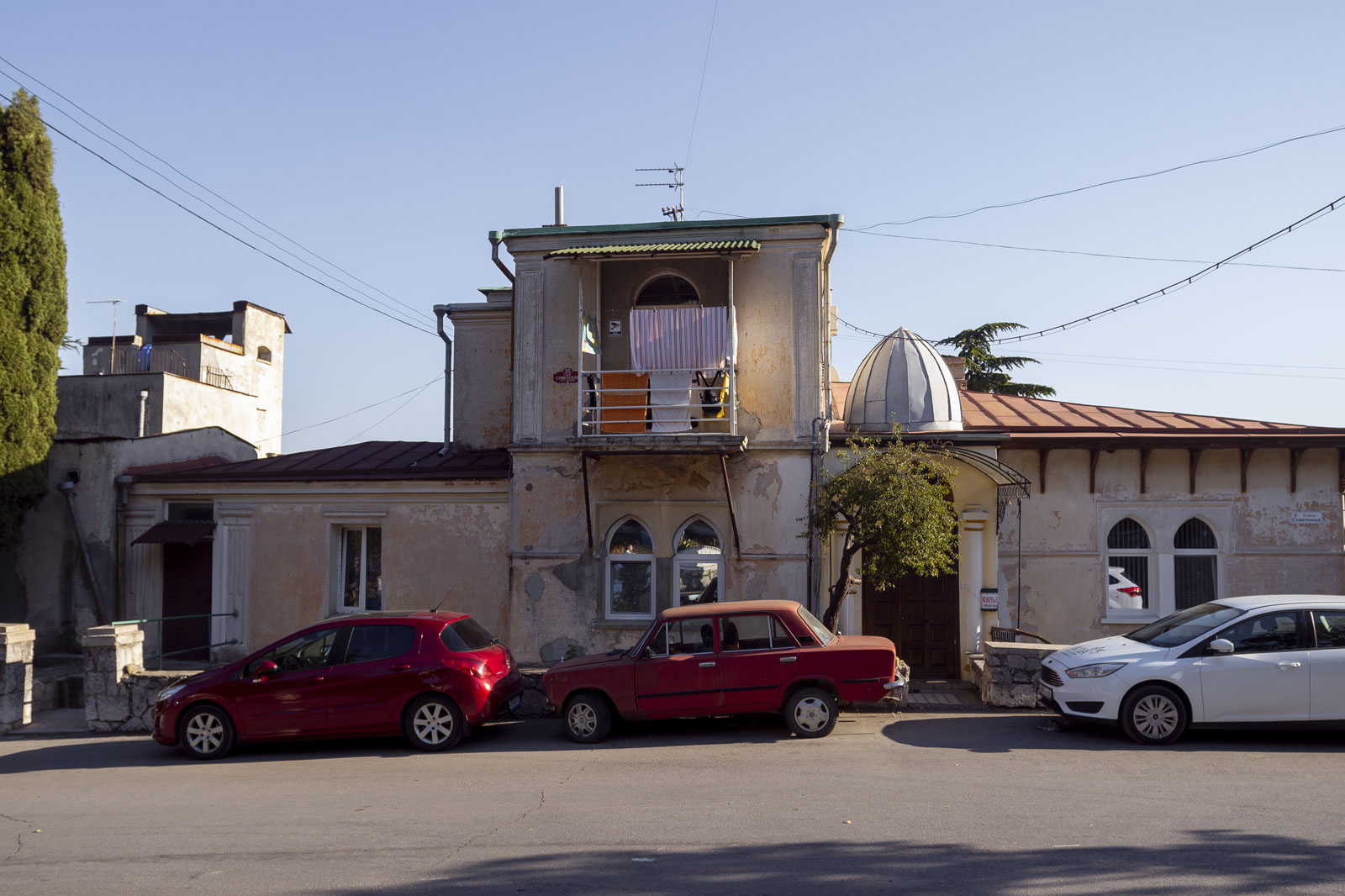
And this is the “Divo” villa, a nobleman Semenov’s 19-room dacha. The owner abandoned it while fleeing from the Bolsheviks in 1920, who then converted the dacha into a multi-apartment building.

The most famous dacha in Simeiz is the “Ksenia” villa. The whole city writes almanacs about it.
In short, there was a major industrial oligarch in the Russian Empire named Sergey Maltsov, who had 100,000 people working for him in central Russia alone. He paid with his shares instead of money, owned a private police force, and introduced an 8-hour workday and social benefits at his factories long before the revolution. So, this Maltsov massively bought land in Crimea and built palaces and dachas, and his son Nikolai even built an astrophysical station in Simeiz, which he later gave to the Pulkovo Observatory as a gift.
At some point, the Maltsovs got tired of building dachas and began to sell their land. One of the plots was bought by a noblewoman named Chuikhevich, who built this villa in 1906. The style is Scottish chalet or neo-Baroque. It has two residential buildings and 28 rooms.

The second plot in the same place was bought by a noblewoman Kerkova from a merchant family, and in 1917, she built the “Dream” villa in an absolutely crazy style of an eastern palace with minarets and a Byzantine dome.

Of course, the Bolsheviks could not forgive such wealth. Therefore, after the occupation of Crimea in 1920, former nobles were expelled to Europe, and their dachas were converted into sanatoriums. The “Dream” villa was made into one of the buildings of the “Red Beacon” sanatorium, and a real estate agency and hotel were opened in the “Ksenia”.
Nowadays, the “Ksenia” is being restored, while the “Dream” still stands abandoned.
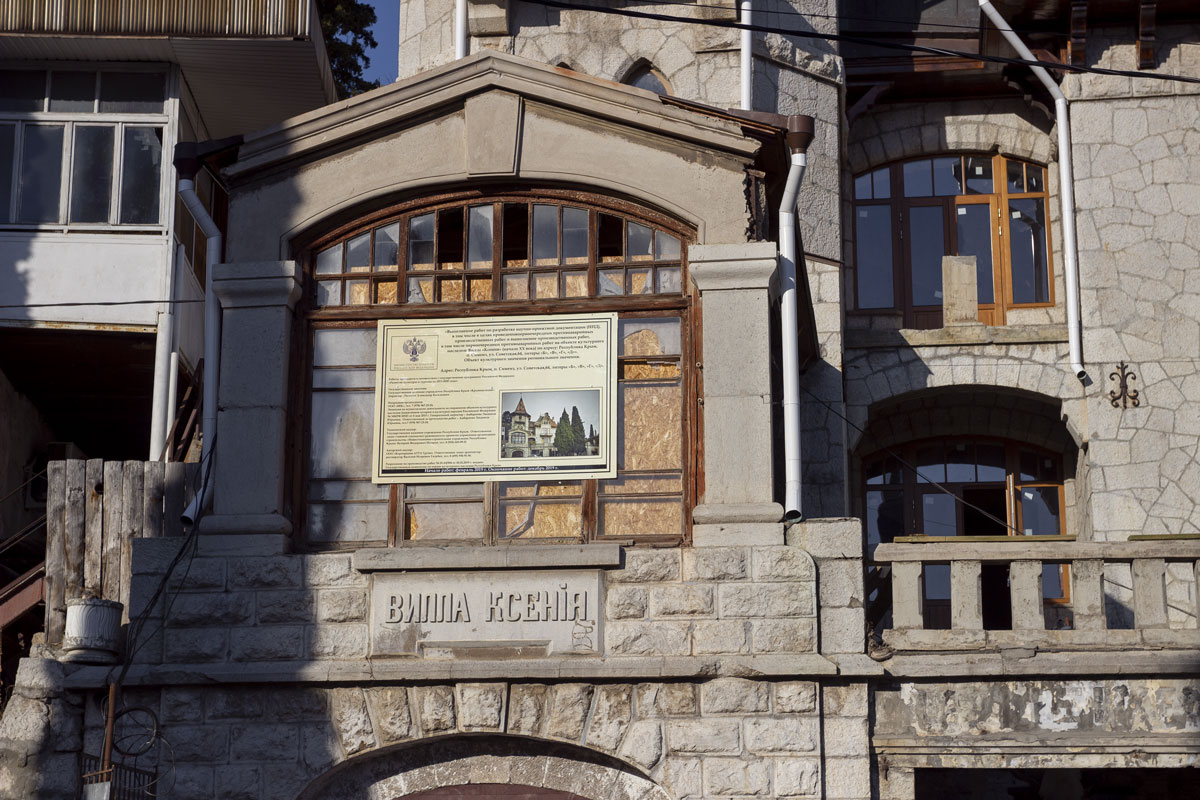
The main street of Simeiz, Apollo’s Alley, adjoins the villas.
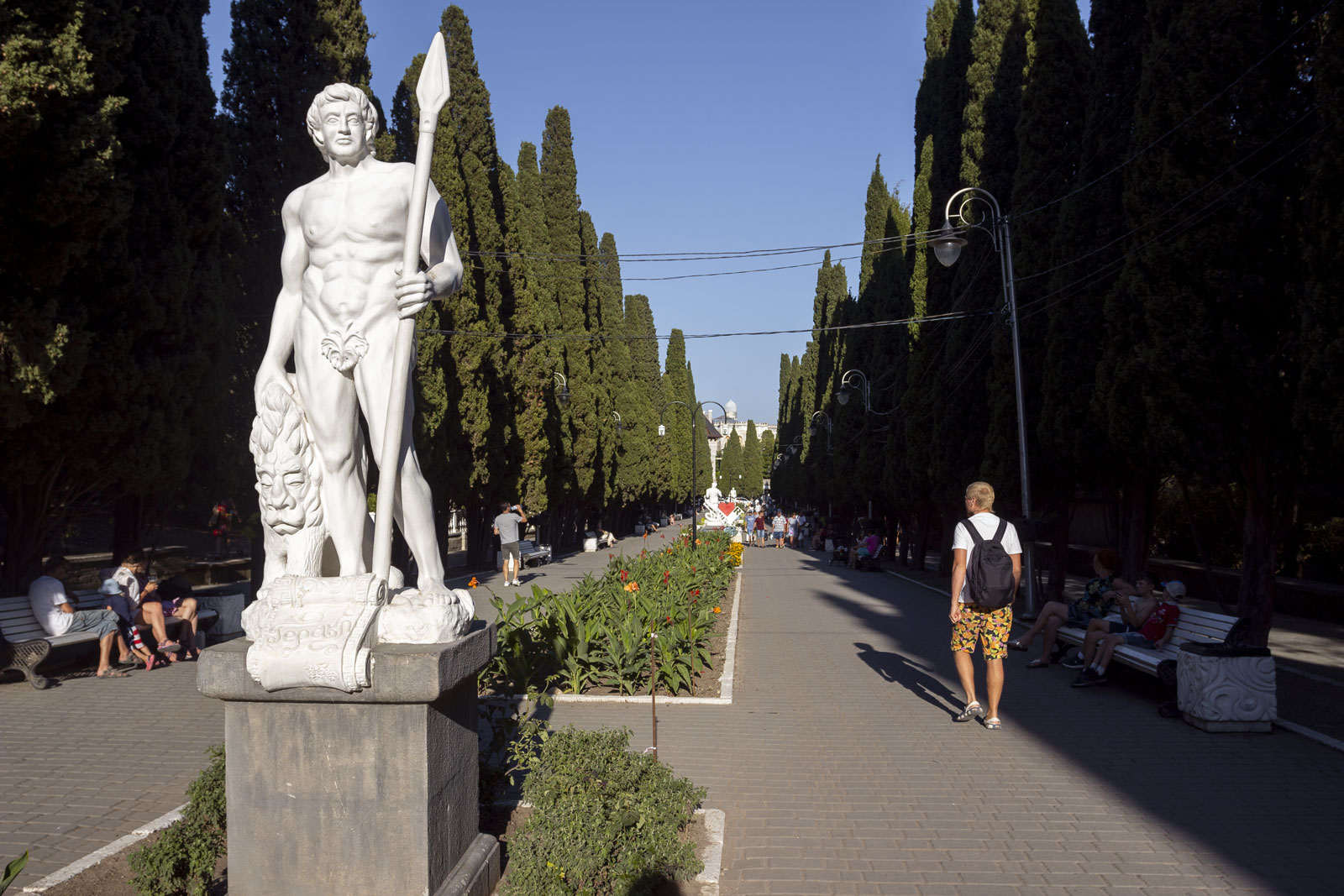
It is the main street because this is where sweet couples love to stroll the most. I mean gay couples, of course. So in Simeiz, this alley is called the “Blue Alley.” Isn’t it great? And the Apollos with muscular butts fit perfectly!
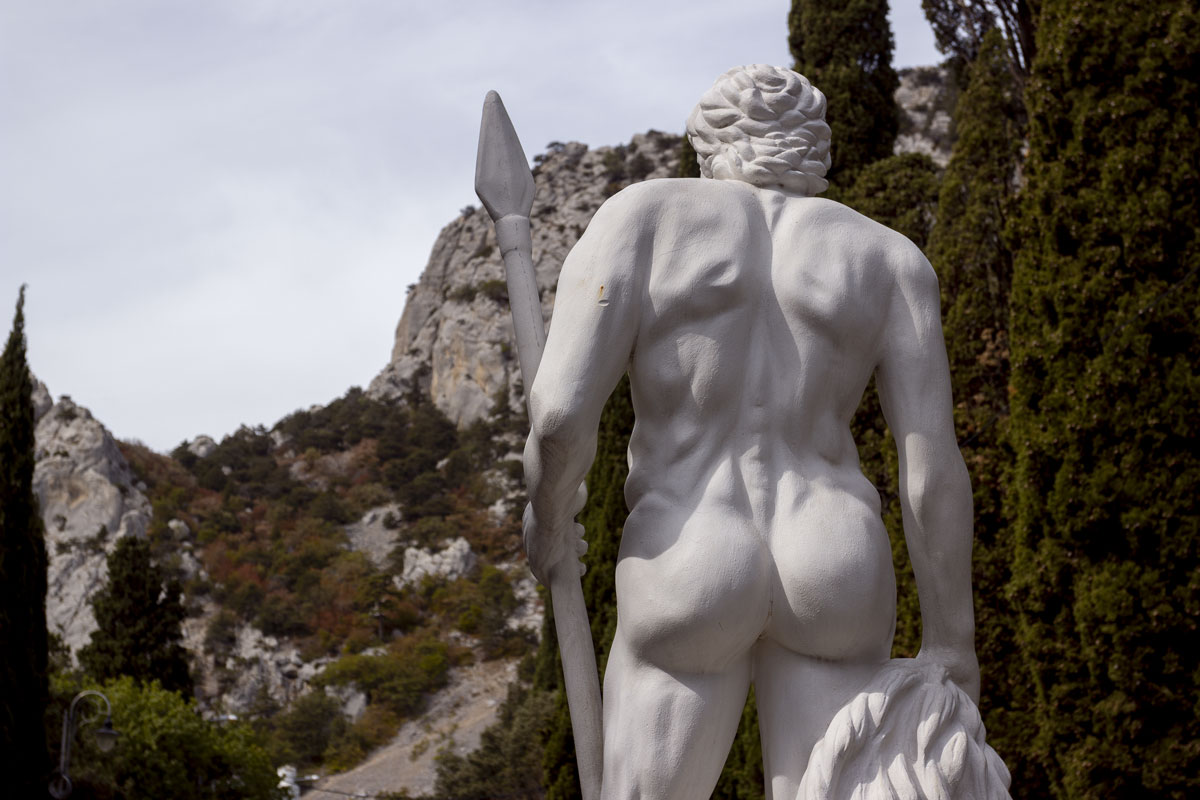
The film “Shapito Show” has many scenes shot on the alley. Among them are kisses on a bench and transvestites in costumes. Walking around Simeiz, you realize that Sergey Loban filmed an almost documentary-style film.

The main gay bar in Simeiz, “Yeji,” with a completely charming emblem is also located on the alley.
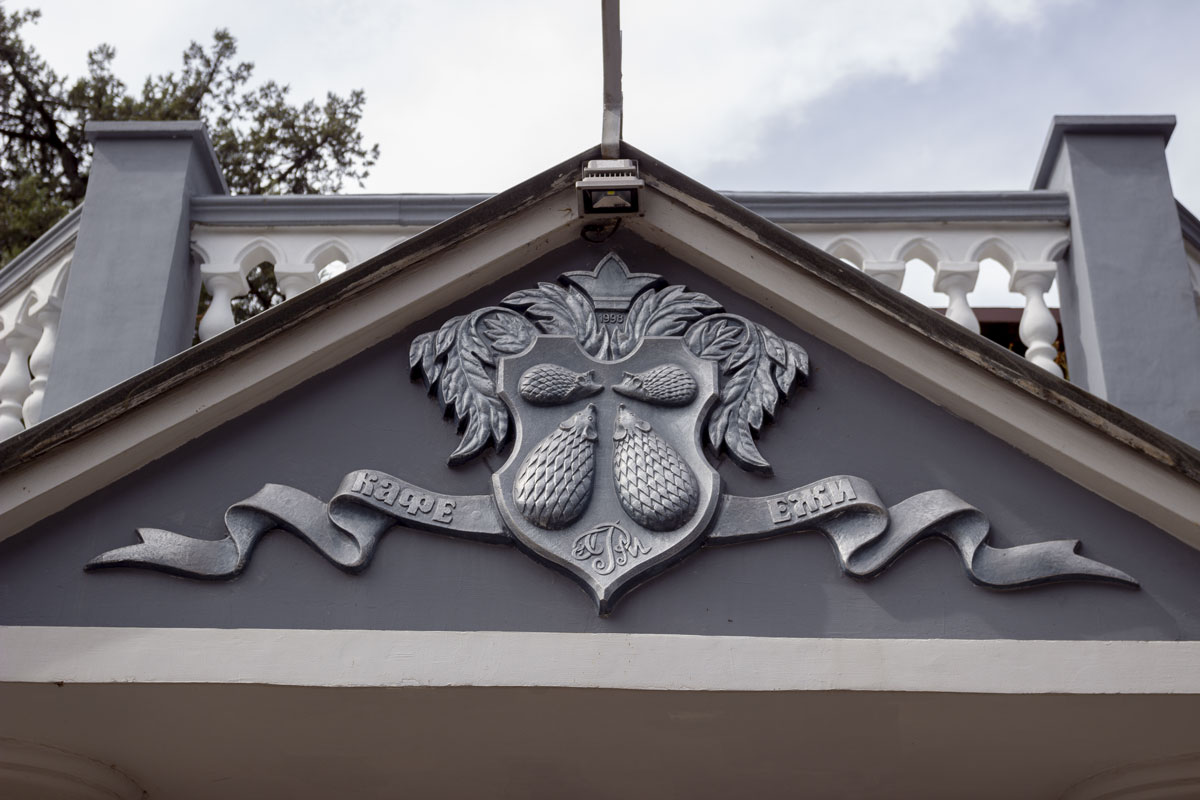
Ukraine was more accepting of the LGBTQ+ community. Locals, of course, didn’t necessarily love all that revelry, but tourists from all over the former USSR and abroad flocked to Simeiz. They left a lot of money. The market overcame prejudices, the city thrived, and lived for its pleasure.
When Russia annexed Crimea, everything changed dramatically due to powerful propaganda of hatred towards sexual minorities. Attacks on gays began. Some media reported on torture in police departments, tracking, staged dates — in general, on a targeted hunt for people. The head of Crimea Aksenov stated that “such people are not needed in Crimea, and they will never hold public events.” Deputy Prime Minister Dmitry Polonsky went even further and remembered the war veterans: “Our grandfathers did not fight for this. We must raise an absolutely healthy society, raise young people in the mode of categorical rejection of such perversions.”
An absolutely healthy society of Simeiz, which had been treating all tourists well for many years before that, reacted immediately. The population of Simeiz decreased from 3,900 people in 2013 to 2,600 people in 2014. In just one year, one-third of the population left the city.
Now only a café called “Yeji” and a couple of beaches remain from the former gay Mecca of the former USSR. The bourgeois resort has turned into a gloomy health resort. Guests from Russia still come here out of old habit — they say about two thousand people per summer. This is very little: earlier ten thousand used to come. So even “Yeji” is mostly empty most of the time, although the bar used to be packed and occupied two floors. Other establishments have simply closed.
Meanwhile, according to rough statistics, “people of non-traditional orientation” make up more than 6% of the population. For Russia, this is 9 million people, which is approximately the population of the entire Belarus. A person who calls for fostering dislike towards a social group that makes up an entire country — is a complete idiot.
But let’s return to the city. The park-hotel “Simeiz” is located not far from the alley.
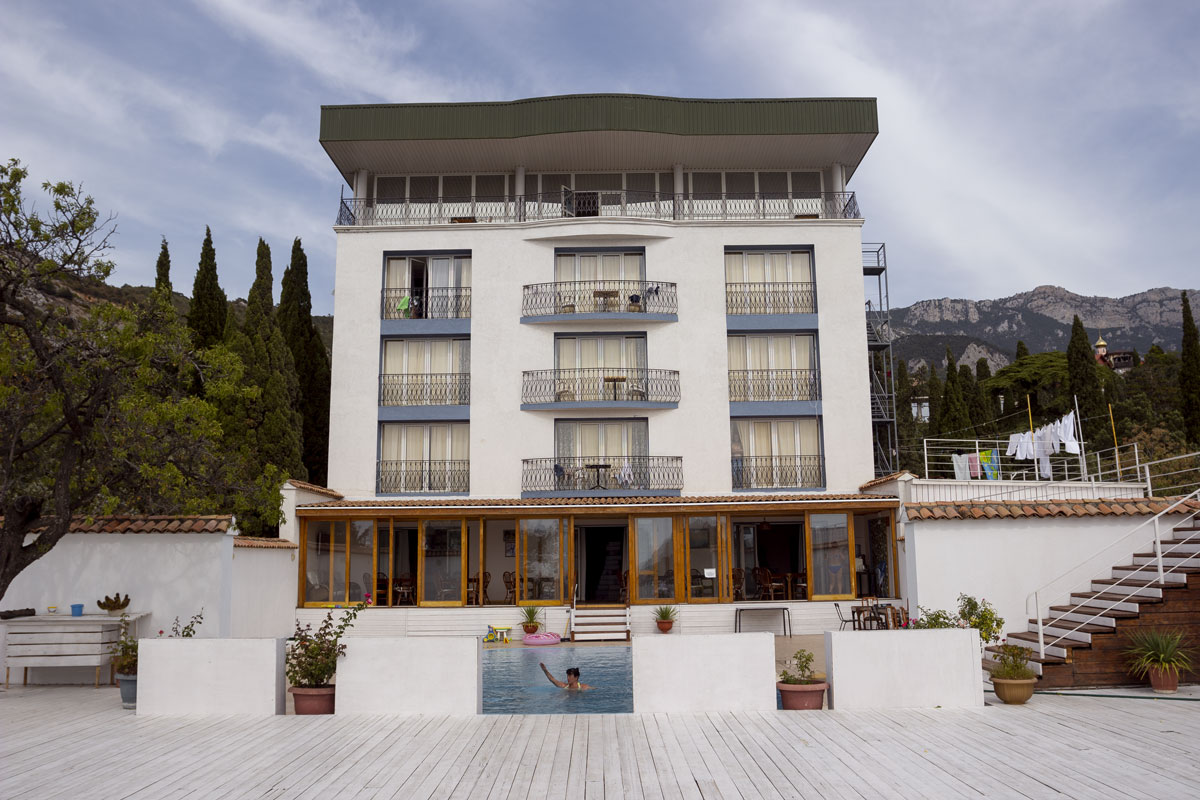
The “Big Top Show” filmed a wedding reception with Tsoi here.

This is one of the best hotels in the city, as it offers a view of the main attraction of Simeiz. This mountain of whimsical shape is called Diva:

There is a suspension bridge leading to Diva, and it costs 200 rubles to cross it.
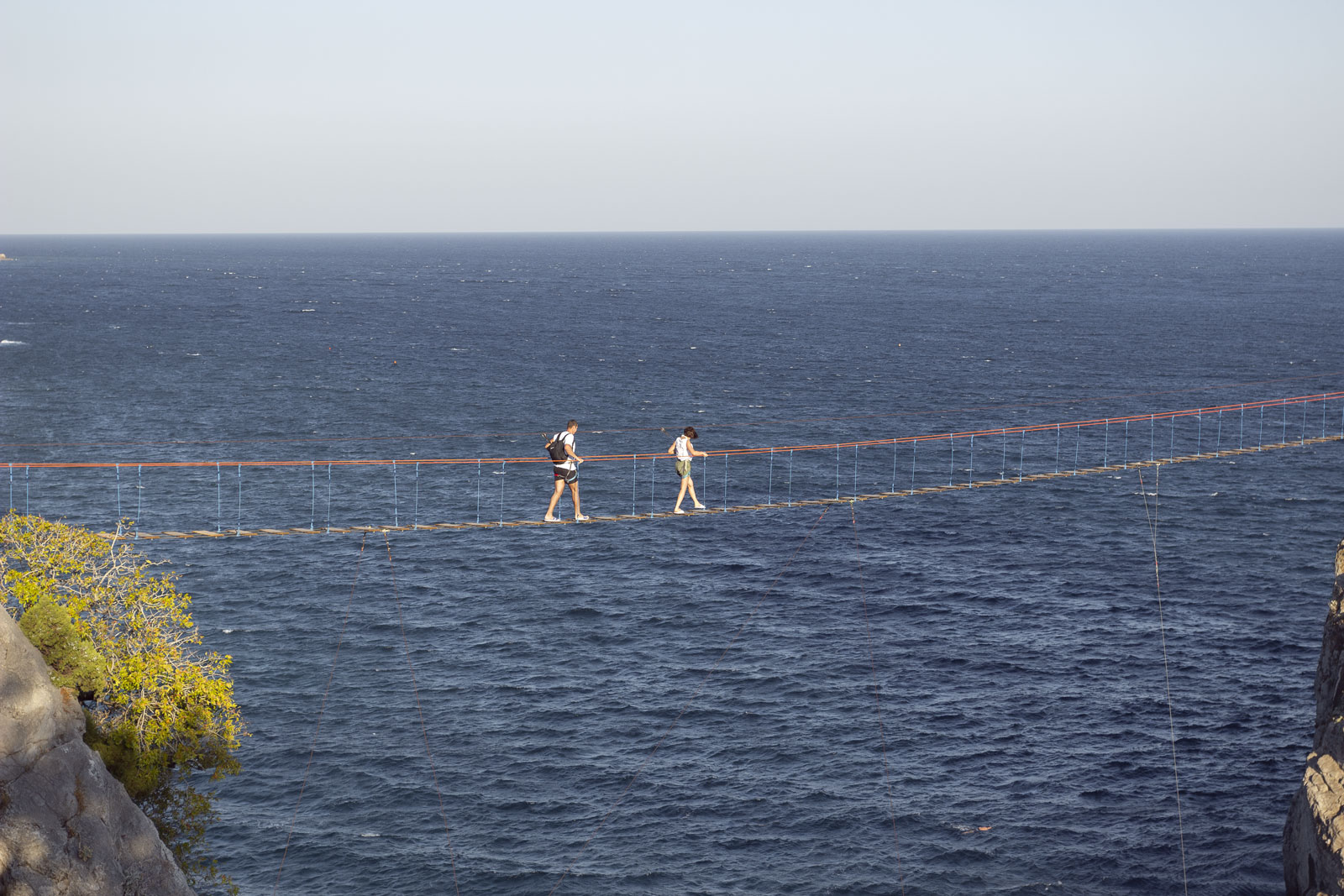
You can climb the mountain for free using an old staircase, but it’s more difficult and not as spectacular.
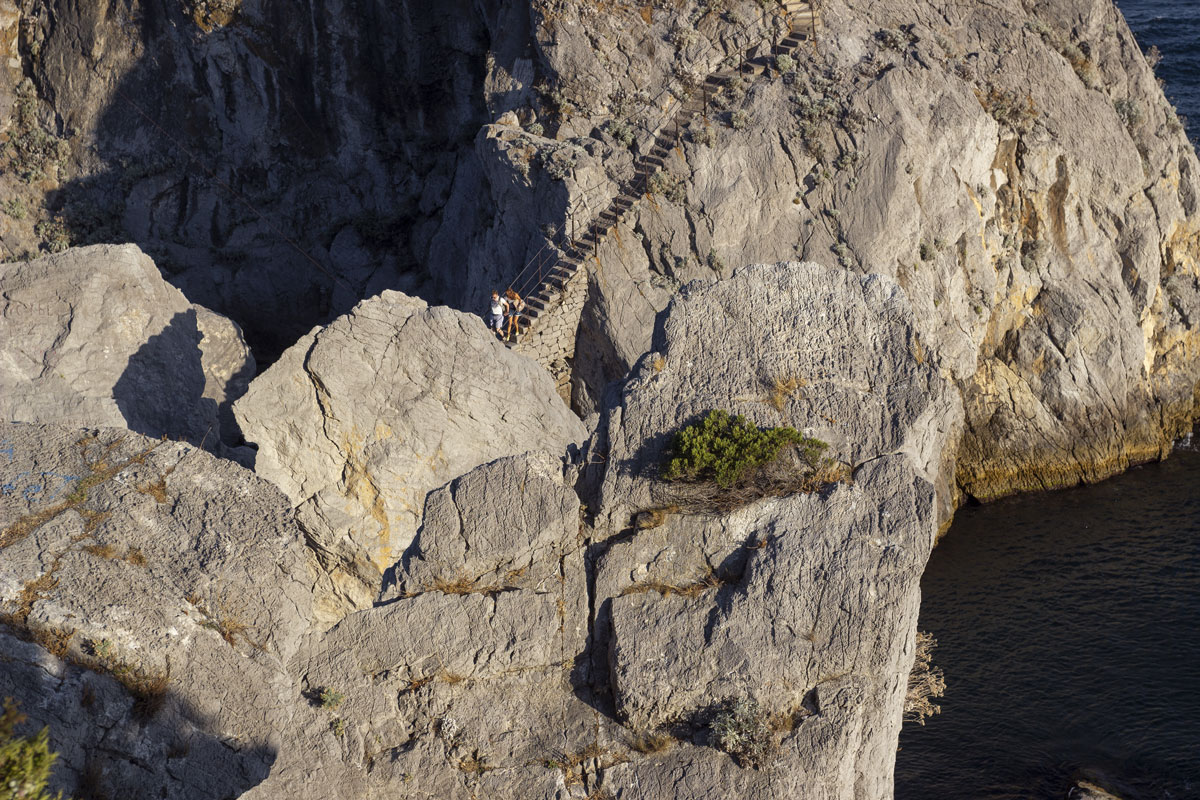
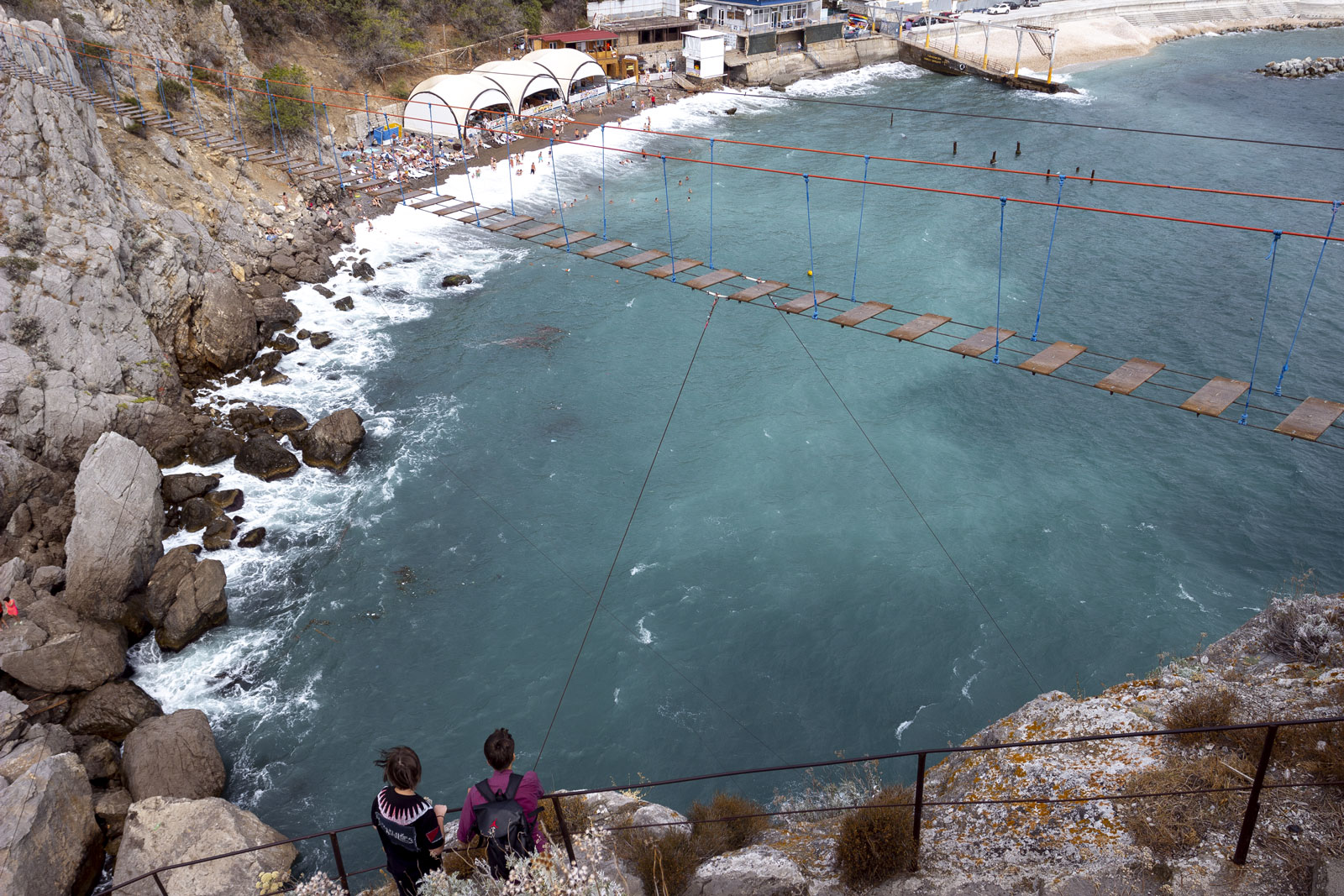
The old staircase is quite steep and dangerous; it’s easy to fall from here.
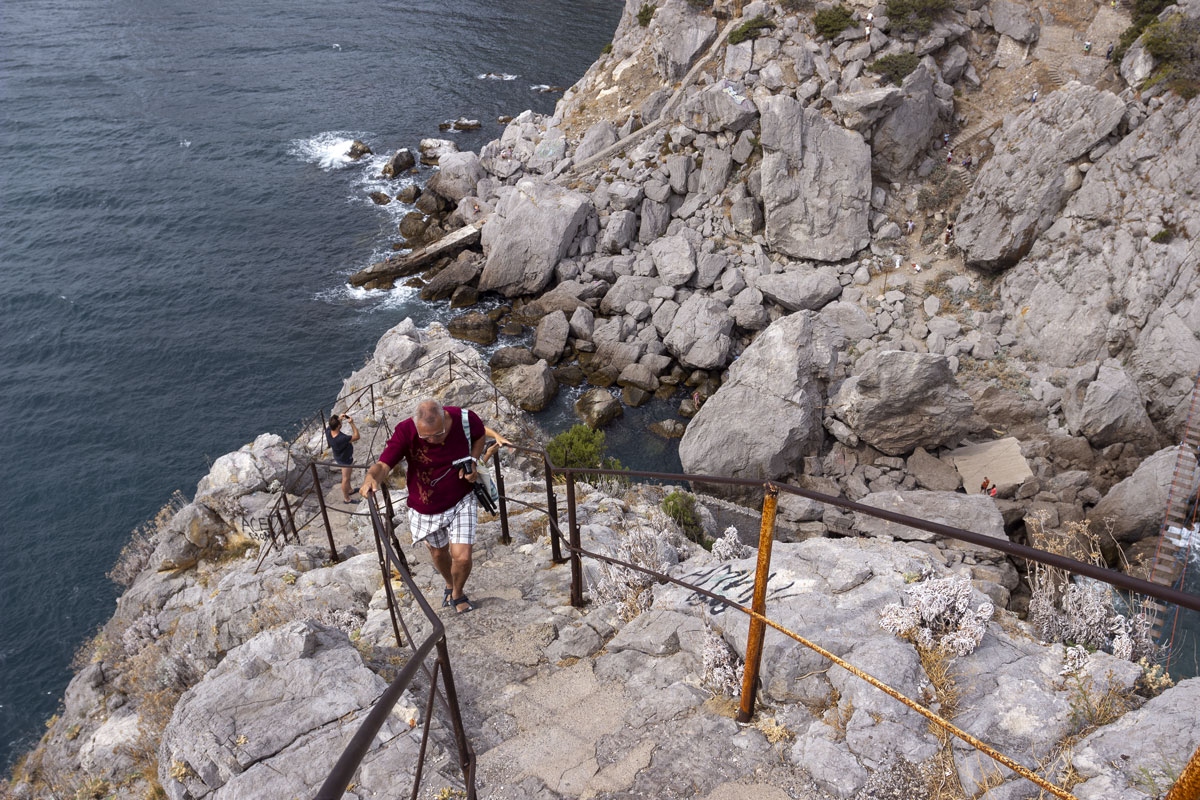
At the top of the mountain, there is a narrow platform where there are always many people.

From the top, you can see all of Simeiz.

It’s amazing that someone still jumps into the water from these rocks.
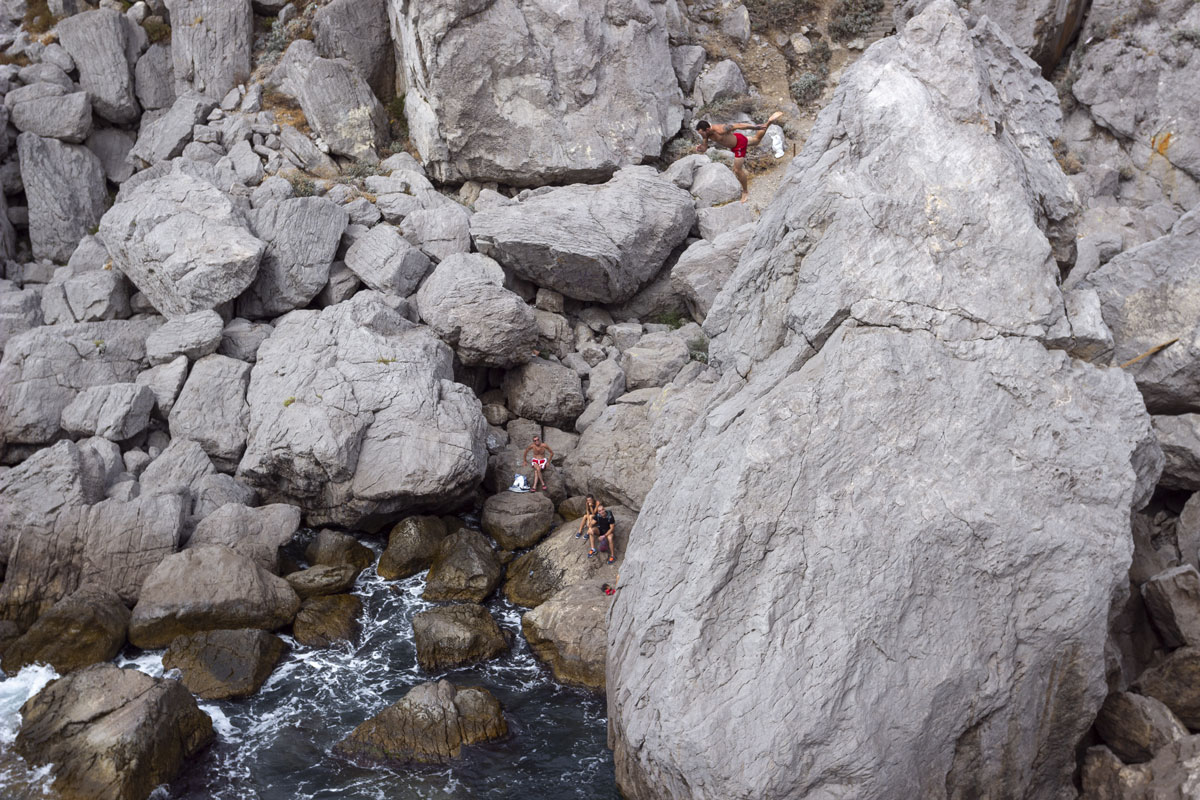
In the “Big Top Show” here, Baresky shot Mamontov.
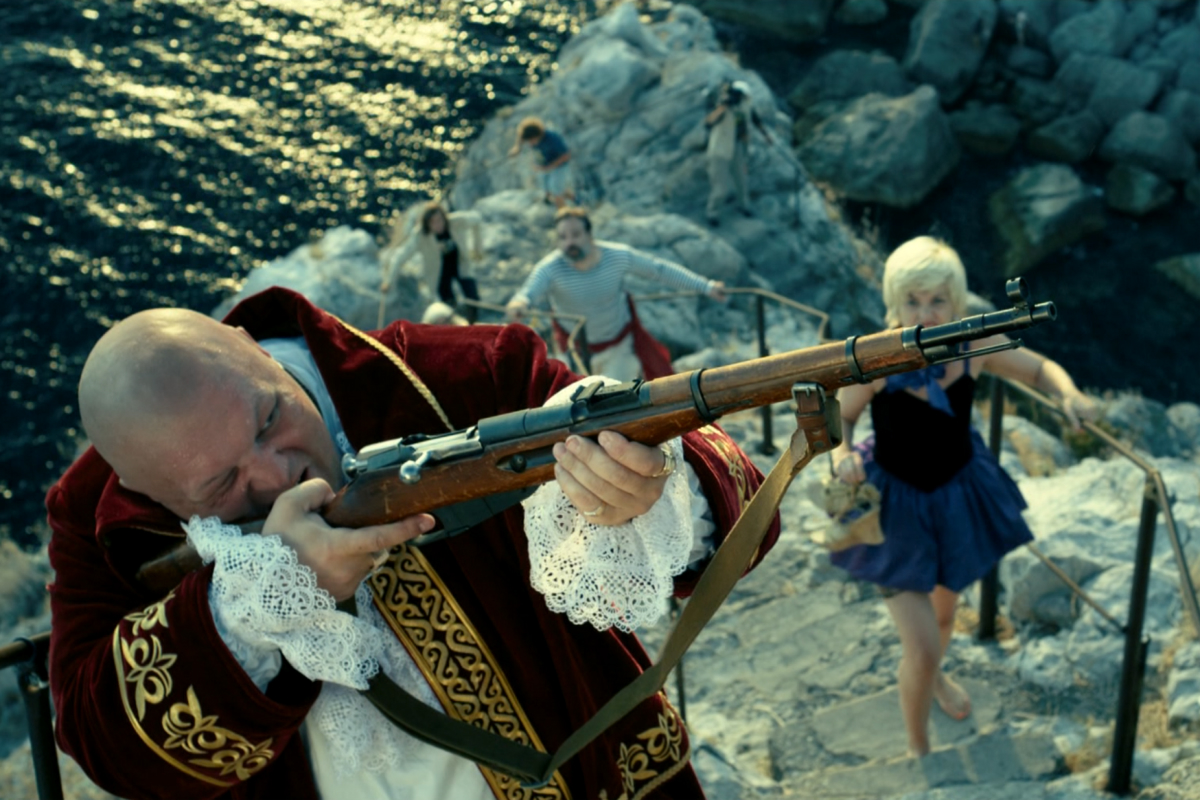
You can also see some kind of metal structure in the sea from Diva. It turned out to be the oceanographic platform of the Federal Research Center for Marine Geology and Oceanography named after I.S. Gramberg of the Russian Academy of Sciences. In the movie “Big Top Show,” one of the characters accidentally swam here, and he was later rescued from here.

There is a beach under Diva. Scenes from movies were also filmed here: the mountain makes for an excellent backdrop. During the day, the beach is unremarkable, but at night it is absolutely magical. Multicolored lighting illuminates everything. The sea shines with illumination. A spotlight shines on Diva. Stars are visible in the sky. It’s warm at night. You can sit on the rocks and drink local wine. It’s heavenly.

Simeiz is a magical place, a filming location, a small cozy dream. Yalta fools say that Simeiz is a city for aesthetes.
I don’t know, maybe. But Simeiz definitely made the trip to Crimea worthwhile.


